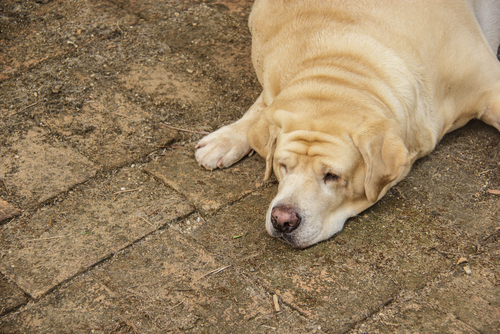
Photo: Shutterstock
Obesity is a common problem in humans as well as in pets. We’re letting our pets suffer due to our generous serving sizes. When you overfeed your pet, you are putting it at risk of many of the diseases. Being obese can lead to diabetes, hyperlipidemia and cancers in animals.
Owners play the most important role in keeping a pet fit and obesity at bay. Kelly Swanson, Professor of Animal and Nutritional Sciences at the University of Illinois, says, “Owners need to actually recognize that their pet is obese, and is not just a funny, pudgy animal that looks cute. Lean, healthy pets not only live longer, but more importantly, have a better quality of life.”
Five companion animal nutrition experts examined the repercussions of overfeeding or imprecisely feeding cats and dogs at the ADSA-ASAS Joint Annual Meeting this year. “Companion Animal Symposium: Bioenergetics of pet food” was a part of the Companion Animal Science Program.
The bioenergetics, which involves the study of energy flow through living organisms, of pet food was explored at the event. This subject helps to explain the connection between overweight animals and the food they eat.
Dennis Jewell, Research Scientist at Hill’s Pet Nutrition, said, “Each pet has unique genetics that determine, for example, if they’re going to use more calories to maintain their body weight than other animals. We can design feeding programs for specific pet populations, based on factors like age, size, et cetera, but feeding regimens still come down to the individual pet.”
For instance, programs designed to lose weight focus on consuming less calorie-dense food and more fiber-rich food. Eating more fiber tends to cause less ad-libitum feeding.
If the pets are overweight, then they are at risk of health problems such as diabetes mellitus and arthritis and their lifespan may be shortened.
Here are five essential ways to manage your pet’s weight problems.
Weight loss plan
A weight loss plan for your pet is highly recommended when you notice that it is gaining weight. Take it to your regular vet and they will do a proper examination, including weighing them. After thorough check up vet will calculate the body weight looking at the breed and will suggest the appropriate weight for it.
Proper diet
A healthy and well formulated weight loss food is the best way for your pet to lose weight. The owner should look for food which is low fat and low calories. The food should be nutritious, higher in protein and fibre. It is important to feed the recommended amount to pets.
Type of feeding
Managing the weight for humans and pets are almost same. The weight loss program suggests to have equal amount of calories each day. The meals should be divided in two to four small meals every day. As vet recommends, feeding pets more than once a day boosts their metabolism and stops them becoming too hungry.
Daily exercise
It is important that your pet exercises to use up calories. At least 30 minutes of activity each day is recommended for dogs and cats.
Monitoring Progress
You should monitor the progress of your pet’s health during their weight loss plan. This is best done at the vet. If you find that your pet is not losing weight, then further reduction in the daily calories will help.
Please like FamiLife’s page on Facebook so that you get all our articles and others may find us.
